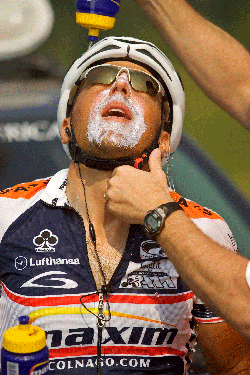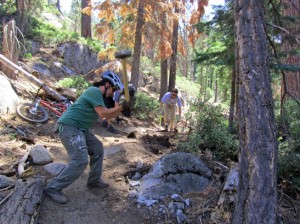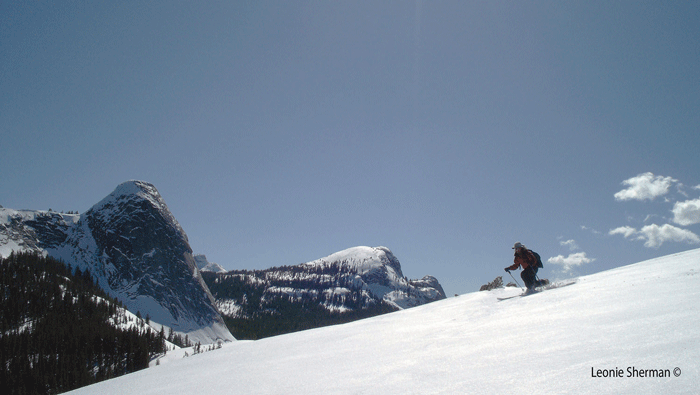- Tahoe’s Nevada Beach Tops the List of Hard-to-Book Campgrounds - 07/17/2024
- Cannabis Watershed Protection Program Cleans Up Illegal Grow Sites - 07/10/2024
- French Fire - 07/05/2024
The True Story of the Race Across America
The Race Across America is an epic, 3000-mile bicycle race from the Pacific to the Atlantic. First held in 1982, RAAM is considered one of the most challenging sporting events in the world. Top riders finish in less than 10 days, riding over 300 miles per day and sleeping only a few hours per night.
Amid the sleepless grind, riders must endure the searing heat of the Mojave Desert, the agonizing climbs of the Rockies, the driving winds of the Great Plains, and the twisting switchbacks of the Appalachians — before the final sprint to the finish line in Atlantic City.
With little prize money at stake, the fundamental goal of the race is simply to finish, a challenge half of all riders fail to meet.
The film Bicycle Dreams, which won a number of film festival awards when it was released in 2009 and was being screened this fall in Northern California, presents the race from a competitor’s viewpoint. By the end of the film, you feel as if you ridden the race yourself, at least emotionally. Distilled from more than 600 hours of footage, Bicycle Dreams hooks you in and keeps you in the saddle from start to finish.
Recently, ASJ caught up with the filmmaker, Stephen Auerbach, in town for a screening in San Jose.
Why did you decide to do a documentary on RAAM?
Auerbach: As a filmmaker, one looks for the most compelling stories to document. When I discovered this little-known but monumental event called the Race Across America, I knew that it would be a worthy experiment to train my cameras on the race. When I heard that one cyclist rode from California to Lincoln, Nebraska without stopping (71 hours), I knew that the race had great potential for exploring the unknown. This guy finally stopped when he began to have hallucinations of UFOs and aliens trying to knock him off his bicycle. That illustrated the mental aspect. Physically, there are few challenges that put a greater stress on the body. Many cyclists have had to ride straight into the emergency room.
Finally, there was the spiritual component: What would compel an individual to attempt something so outside the norm? For me, this movie was like the one that explored the space program (The Right Stuff) in that, at the end of the day, these explorers were on a unique journey, oneexploring inner space.
Bottom line, when I learned of what happens, under the radar, every summer, upon the highways and byways of America, it occurred to me, “How could I not document the race?”
What special insight will viewers take away from this film?
Auerbach: For viewers, the film works as a mirror to their inner landscape. Many of the viewer’s dreams, whether attempted, discarded, or realized, are reflected in the dramas that the various characters go through. The viewer is on the saddle each pedal stroke, while these brave souls attempt the seemingly impossible. The hook is that these are not professional athletes, they are ordinary people doing extraordinary things — in other words, people like you and me. Ultimately, the film is about desire, and how to re-connect to desire in its most primal form.
Why did the festival judges react so favorably? I believe the reason is that the film is so truthful. What happened, happened in front of our 24 cameras. There was no writer, no screenplay, no re-takes. My goal as a filmmaker was to be a sponge of reality, pure and simple.
How did the project affect you?
Auerbach: Making Bicycle Dreams taught me to never give up until I reached the desired goal. I came home from the journey with 650 hours of footage. That’s something like 39,000 minutes. I edited this down to 106 minutes. I would not let go of the film until I knew in my heart that I had done the absolute best job I could do. … When I finished I had no idea if anyone, anywhere, would ever see the film or care about it. When it took off and began developing a following, it confirmed for me that I should follow my instincts and never quit. There were many times when I wanted to just give up at telling this story.
What was your best highlight from the project?
Auerbach: My highlight was getting to know the cyclist Jure Robic. His soul
contained a madness that I can relate to very well. His determination was so impressive. The power contained in his pedal strokes and the endurance to going seemed to flow straight from his magnificent heart. His passing last year was a great blow to his many friends and fans. But Jure lives on as one of the greatest athletes ever. (The Slovenian rider, who won RAAM five times, died in a traffic accident in September 2010.)
What’s next?
Auerbach: I’ve started working on what I hope will be the final film in a cycling trilogy. It’s tentatively titled Stay On The Bike. I hope to have it ready for release by the end of this year.
—Michael Horn















